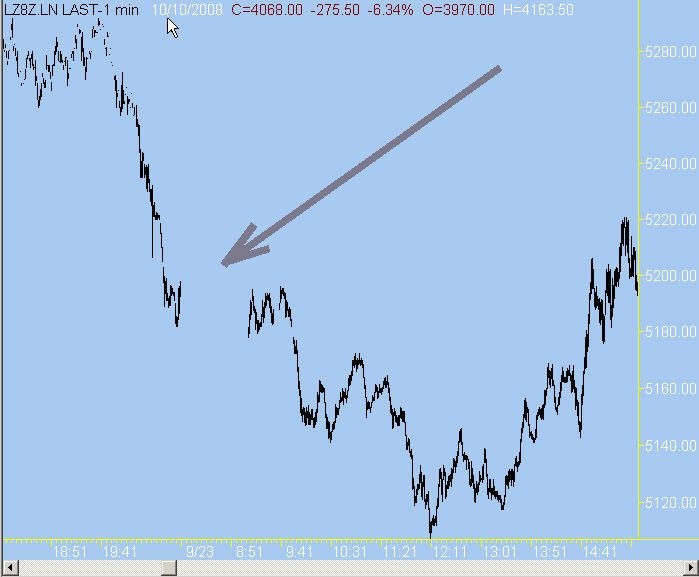Stock Wikipedia the free encyclopedia
Post on: 14 Апрель, 2015 No Comment

Contents
§ Shares [ edit ]
The stock of a corporation is partitioned into shares. the total of which are stated at the time of business formation. Additional shares may subsequently be authorized by the existing shareholders and issued by the company. In some jurisdictions, each share of stock has a certain declared par value. which is a nominal accounting value used to represent the equity on the balance sheet of the corporation. In other jurisdictions, however, shares of stock may be issued without associated par value.
Shares represent a fraction of ownership in a business. A business may declare different types (classes ) of shares, each having distinctive ownership rules, privileges, or share values. Ownership of shares may be documented by issuance of a stock certificate. A stock certificate is a legal document that specifies the amount of shares owned by the shareholder. and other specifics of the shares, such as the par value, if any, or the class of the shares.
§ Types of stock [ edit ]
Stock typically takes the form of shares of either common stock or preferred stock. As a unit of ownership, common stock typically carries voting rights that can be exercised in corporate decisions. Preferred stock differs from common stock in that it typically does not carry voting rights but is legally entitled to receive a certain level of dividend payments before any dividends can be issued to other shareholders. [ 3 ] [ 4 ] [ page needed ] Convertible preferred stock is preferred stock that includes an option for the holder to convert the preferred shares into a fixed number of common shares, usually any time after a predetermined date. Shares of such stock are called convertible preferred shares (or convertible preference shares in the UK).
New equity issue may have specific legal clauses attached that differentiate them from previous issues of the issuer. Some shares of common stock may be issued without the typical voting rights, for instance, or some shares may have special rights unique to them and issued only to certain parties. Often, new issues that have not been registered with a securities governing body may be restricted from resale for certain periods of time.
Preferred stock may be hybrid by having the qualities of bonds of fixed returns and common stock voting rights. They also have preference in the payment of dividends over common stock and also have been given preference at the time of liquidation over common stock. They have other features of accumulation in dividend. In addition, preferred stock usually comes with a letter designation at the end of the security; for example, Berkshire-Hathaway Class B shares sell under stock ticker BRK.B, whereas Class A shares of ORION DHC, Inc will sell under ticker OODHA until the company drops the A creating ticker OODH for its Common shares only designation. This extra letter does not mean that any exclusive rights exist for the shareholders but it does let investors know that the shares are considered for such, however, these rights or privileges may change based on the decisions made by the underlying company.
§ Rule 144 stock [ edit ]
Rule 144 Stock is a common name given to shares of stock subject SEC Rule 144: Selling Restricted and Control Securities. [ 5 ] Under Rule 144, restricted and controlled securities are acquired in unregistered form. Investors either purchase or take ownership of these securities through private sales (or other means such as via ESOPs or in exchange for seed money) from the issuing company (as in the case with Restricted Securities) or from an affiliate of the issuer (as in the case with Control Securities). Investors wishing to sell these securities are subject to different rules than those selling traditional common or preferred stock. These individuals will only be allowed to liquidate their securities after meeting the specific conditions set forth by SEC Rule 144.
§ Stock derivatives [ edit ]
For more details on this topic, see equity derivative .
A stock derivative is any financial instrument which has a value that is dependent on the price of the underlying stock. Futures and options are the main types of derivatives on stocks. The underlying security may be a stock index or an individual firm’s stock, e.g. single-stock futures .
Stock futures are contracts where the buyer is long. i.e. takes on the obligation to buy on the contract maturity date, and the seller is short. i.e. takes on the obligation to sell. Stock index futures are generally not delivered in the usual manner, but by cash settlement.

A stock option is a class of option. Specifically, a call option is the right (not obligation) to buy stock in the future at a fixed price and a put option is the right (not obligation) to sell stock in the future at a fixed price. Thus, the value of a stock option changes in reaction to the underlying stock of which it is a derivative. The most popular method of valuing stock options is the Black Scholes model. [ 6 ] Apart from call options granted to employees. most stock options are transferable.
§ History [ edit ]
One of the earliest stock by VOC
During the Roman Republic, the state contracted (leased) out many of its services to private companies. These government contractors were called publicani. or societas publicanorum as individual company. [ 7 ] These companies were similar to modern corporations, or joint-stock companies more specifically, in couple of aspects. They issued shares called partes (for large cooperatives) and particulae which were small shares that acted like today’s over-the-counter shares. [ 8 ] Polybius mentions that “almost every citizen” participated in the government leases. [ 9 ] There is also an evidence that the price of stocks fluctuated. The great Roman orator Cicero speaks of partes illo tempore carissimae. which means “share that had a very high price at that time. [ 10 ] This implies a fluctuation of price and stock market behavior in Rome.
The earliest recognized joint-stock company in modern times was the English (later British) East India Company. one of the most famous joint-stock companies. It was granted an English Royal Charter by Elizabeth I on December 31, 1600, with the intention of favouring trade privileges in India. The Royal Charter effectively gave the newly created Honourable East India Company (HEIC) a 15-year monopoly on all trade in the East Indies. [ 12 ] The Company transformed from a commercial trading venture to one that virtually ruled India as it acquired auxiliary governmental and military functions, until its dissolution.
The East India Company’s flag initially had the flag of England. St. George’s Cross. in the corner.
Soon afterwards, in 1602, [ 13 ] the Dutch East India Company issued the first shares that were made tradeable on the Amsterdam Stock Exchange. an invention that enhanced the ability of joint-stock companies to attract capital from investors as they now easily could dispose of their shares. The Dutch East India Company became the first multinational corporation and the first megacorporation. Between 1602 and 1796 it traded 2.5 million tons of cargo with Asia on 4,785 ships and sent a million Europeans to work in Asia, surpassing all other rivals.
Economic historians find the Dutch stock market of the 17th century particularly interesting: there is clear documentation of the use of stock futures, stock options. short selling. the use of credit to purchase shares, a speculative bubble that crashed in 1695, and a change in fashion that unfolded and reverted in time with the market (in this case it was headdresses instead of hemlines ). Dr. Edward Stringham also noted that the uses of practices such as short selling continued to occur during this time despite the government passing laws against it. This is unusual because it shows individual parties fulfilling contracts that were not legally enforceable and where the parties involved could incur a loss. Stringham argues that this shows that contracts can be created and enforced without state sanction or, in this case, in spite of laws to the contrary. [ 14 ] [ 15 ]














